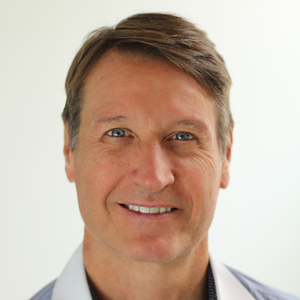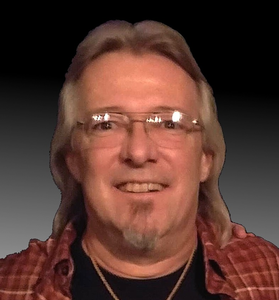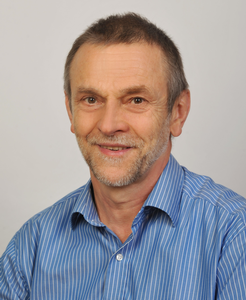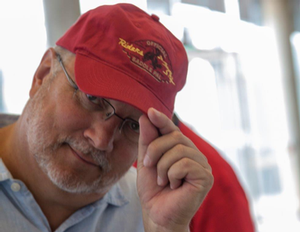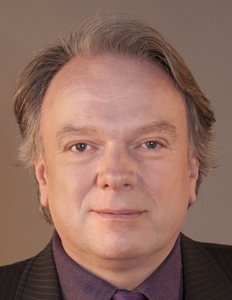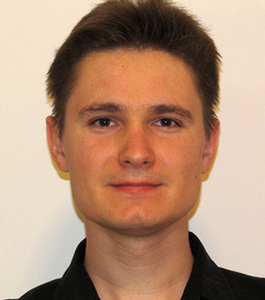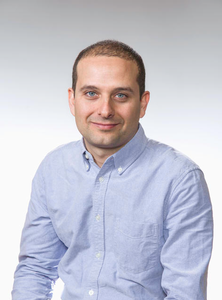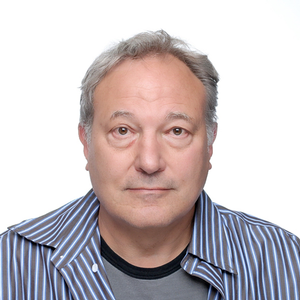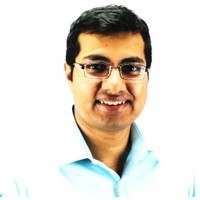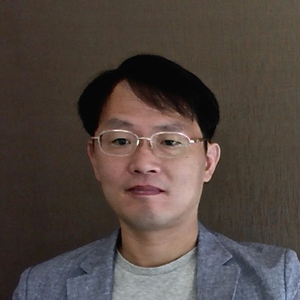AES New York 2018
Product Development Track Event Details
Wednesday, October 17, 9:00 am — 10:30 am (1E09)
Product Development: PD01 - Time to Market: What Can You Do about It?
Presenter:Scott Leslie, PD Squared - Irvine, CA USA
Time to Market may be the most important feature in a product today. Product lifecycles and windows of opportunity are shrinking. Most product companies miss their time to market needs because they don't make major changes to their development strategy and process. In this Product Development session, the presenter will lead a discussion on the nine causes of late to market projects and how to leverage best practices, inside and outside resources, build vs buy, and development technologies to bring your product to market on time!
Wednesday, October 17, 10:45 am — 12:15 pm (1E21)
Recording & Production: RP01 - Microphones—Can You Hear the Specs? A Master Class
Chair:Helmut Wittek, SCHOEPS Mikrofone GmbH - Karlsruhe, Germany
Panelists:
Eddy Bøgh Brixen, EBB-consult - Smørum, Denmark; DPA Microphones - Allerød, Denmark
David Josephson, Josephson Engineering, Inc. - Santa Cruz, CA, USA
There are numerous microphones available to the audio engineer. It's not easy to compare them on a reliable basis, often the choice of the model is made on the basis of experience or perhaps just habits—or just because it looks nice. Nevertheless, there is valuable information in the microphone specifications. This master class held by well-known microphone experts of leading microphone manufacturers demystifies the most important microphone specs and provides the attendees with up-to-date information on how these specs are obtained and can be interpreted. Furthermore, many practical audio demonstrations are given in order to help everyone to understood how the numbers relate to the perceived sound.
 | This session is presented in association with the AES Technical Committee on Microphones and Applications |
Wednesday, October 17, 10:45 am — 12:15 pm (1E09)
Product Development: PD02 - Power Amplification for High Resolution Audio
Presenter:John Dawson, Jade Electronics Ltd - Cambridge, UK
Driving modern passive loudspeakers to realistic levels without audible distortion can be surprisingly demanding—more so when the source is high resolution audio. And, although the peak power levels are much lower, achieving full dynamic range with headphones can also present tricky design problems. This tutorial reviews the various types of linear amplifier—particularly classes A, AB, B, D, G and H—and examines some of the trade-offs involved in designing and implementing some recent commercial designs for both speakers and headphones. A number of the author's measurements of real products—not all of them good—will be shown.
 | This session is presented in association with the AES Technical Committee on High Resolution Audio |
Wednesday, October 17, 11:30 am — 12:00 pm (1E10)
Applications in Audio: AA01 - Vacuum Tube Electronics for Solid State Engineers
Presenters:Scott Dorsey, Kludge Audio - Williamsburg, VA, USA
David Hill, Crane Song Inc. - Superior, WI, USA; Dave Hill Designs - Superior, WI, USA
David Josephson, Josephson Engineering, Inc. - Santa Cruz, CA, USA
Vacuum tube electronics is conceptually different than solid state devices, in part because the size of each stage requires minimizing the number of stages of electronics, in part because the high impedances involved almost always require the use of matching transformers. All of these changes have severe consequences for the designer in how circuits are laid out, how feedback is used, and in fundamental circuit and system design. Younger engineers who grew up with solid state theory would benefit from an understanding of the constraints on vacuum tube systems and the consequent decisions and compromises to be made in their design.
Wednesday, October 17, 2:15 pm — 3:15 pm (1E09)
Product Development: PD03 - System-Level Solutions for Active Noise Canceling Headphones
Moderator:Michael Klasco, Menlo Scientific Ltd. - Richmond, CA, USA
Panelists:
Mark Donaldson, SoundChip - Aran-Villette, Vaud, Switzerland
Mark Noon, SoundChip - UK
Active noise canceling headphones were first commercialized over 30 years ago yet remain a challenging product to design, manufacture and quality control. Best practice design methods for high performance passive headphones are not fully adequate when developing those with an active noise cancelling feature. Physical construction from materials, earcup wall thickness and ribbing, intra-cavity sealing and mechanical integrity of glue joints, speaker driver parameters and circuit topology all contribute to an active noise cancellation headphone’s unit-to-unit performance and stability in mass production. Our talk will focus on the unique construction and performance aspects that require particular attention during the development phase, as well as the need for precision, speed and automation during end of line testing and calibration.
Wednesday, October 17, 3:30 pm — 5:45 pm (1E09)
Product Development: PD04 - Patents and Other Key Legal Topics
Presenters:Linda Cole, Harvard Law School - Cambridge, MA, USA
Philipp Lengeling, RafterMarsh - Brooklyn, New York, USA
Thomas Millikan, Perkins Coie LLP - San Diego, CA, USA
Heather Rafter, RafterMarsh - Portola Valley, CA, USA
Mark Rifkin, Wolf Haldenstein Adler Freeman & Herz LLP - New York, NY, USA
John Strawn, S Systems Inc. - Larkspur, CA, USA
This Legal Topics Supersession is two sessions in one covering the legal world of product development.
The first session covers the mechanics of patent lawsuits and what you can expect when you are involved, whether you are an owner, manager, engineer, or employee. We will cover the basic steps including: starting a lawsuit; proving a product infringes a patent, proving a patent is invalid, using experts to show infringement or invalidity; deposing experts and company personnel; asking the judge to end the case; limiting what information is available at trial, and trying a case. There will be a detour through the recently established procedures to challenge patents at the patent office rather than in court. The presentation will involve real-world experience, including our work in what was the largest audio patent case in US history (Lucent v. Microsoft) where the MP3 standard itself was on trial for patent infringement. We will present information on how often and at what stage cases settle, as most do. And we will share insights on how to win.
Our second session will provide an overview of legal considerations associated with product development and launch, including IP protection and licensing, certification and branding, privacy regulations (including GDPR), and sales, both direct and through resellers. The diverse panel of legal experts welcomes an interactive discussion around software and hardware development, data collection and storage, and industry practice and pitfalls.
Wednesday, October 17, 4:00 pm — 6:00 pm (Crystal Palace)
Audio Builders Workshop: AB01 - Custom Gear Show
Presenters:eddie ciletti, Manhattan Sound Technicians, Inc. - west saint paul, minnesota
Owen Curtin, Audio Builders Workshop - Lexington, MA, USA; Bridge Sound and Stage - Cambridge, MA, USA
Bob Katz, Digital Domain Mastering - Orlando, FL, USA
Joe Vezzetti, Vezzetti! - Los Angeles, CA, USA
Ethan Winer, RealTraps - New Milford, CT, USA; ethanwiner.com
There is room for improvement and customization in consumer and professional gear from the past or today. We will review some popular projects and modifications. Come see what you can do and meet other builders who will display their projects and answer your questions. Audio Builder Workshop is a workgroup of the Boston AES and is hosting 7 events at the 145th Convention.
Wednesday, October 17, 6:15 pm — 8:30 pm (Off-Site 1)
Historical: H02 - Ray Dolby and the Technical Innovations of Dolby Laboratories
Presenters:Ioan Allen, Dolby Laboratories, Inc. - San Francisco, CA, USA
Thomas Kodros, Dolby Laboratories, Inc. - New York, NY, USA
Dolby Screening Room
1350 Avenue of the Americas, Dolby 88 Screening Room
(corner 6th Ave. & W 55th St.)
This program traces over 50 years of audio developments from Ray Dolby and Dolby Laboratories and uses contemporaneous demonstration material for illustration. The content is primarily non-technical, and will conclude with a demonstration of the combination of Dolby Atmos and Dolby Vision—the ultimate cinema experience of 2018.
Special thanks for Meyer Sound for Providing additional sound equipment.
This event will be at the Dolby Theater. Program will start at 6:45 pm and end at 8:30. We must be completely out of the room by 9:00 pm.
Come early (5:30 pm) for finger food hors d’oeuvres and beer/wine reception.
This will be a ticketed event (available in the Dolby Demo room)
Thursday, October 18, 9:00 am — 10:15 am (1E09)
Product Development: PD05 - Making Your Product Great through Adding Pre-Product Innovation Development
Presenters:Scott Leslie, PD Squared - Irvine, CA USA
Jacques Spillmann, JacQuest - Los Angeles, CA, USA; PD Squared
Most products today are developed in a define, design, validate, and verify process. Because of schedules, resource availability, and traditional thinking, true innovation cannot fit into most projects. In this session the presenter will introduce the subject of pre-product innovation. This method separates innovation development from product development allowing an innovation specialist, inside or outside the organization, to create and produce concepts and pre-designs that program the direction of the product before the definition of the final product is completed or even started in some cases. Further, a method for incorporating pre-product innovation into the overall development process will be presented.
Thursday, October 18, 9:30 am — 11:00 am (Crystal Palace)
Student / Career: SC06 - Saul Walker Student Design Competition
Co-moderators:Justin Chervony, McGill University - Montreal, Quebec, Canada
Bartlomiej Chojnacki, AGH University of Science and Technology - Cracow, Poland; Mega-Acoustic - Kepno, Poland
Mitchell Graham, University of Michigan - Ann Arbor, MI, USA
Maryam Safi, HAW Hamburg - Hamburg, Germany
All accepted entries to the AES Saul Walker Student Design Competition are given the opportunity to show off their designs at this poster/tabletop exhibition. The session is free and open to all convention attendees and is an opportunity for aspiring student hardware and software engineers to have their projects seen by the AES design community. It is an invaluable career-building event and a great place for companies to identify their next employees. Students from both audio and non-audio backgrounds are encouraged to participate. Few restrictions are placed on the nature of the projects, which may include loudspeaker designs, DSP plug-ins, analog hardware, signal analysis tools, mobile applications, and sound synthesis devices. Attendees will observe new, original ideas implemented in working-model prototypes.
Thursday, October 18, 10:15 am — 11:15 am (1E21)
Recording & Production: RP08 - Space, Place, and Bass: Providing Modern Metal Music with an Appropriate Balance between Heaviness and Clarity
Presenters:Steven Fenton, University of Huddersfield - Huddersfield, West Yorkshire, UK
Mark Mynett, University of Huddersfield - Huddersfield, UK
Distinct challenges are posed when providing the various sounds/performances of a modern metal mix with appropriate space, place, and bass. This is especially the case when down-tuning is combined with fast performance subdivisions and ensemble rhythmic synchronization.
This workshop covers intermediate-to-advanced “space, place and bass” mix principles that afford this production style an appropriate balance between heaviness and clarity, including: frequency bracketed kick and bass approaches; anti-masking mix theory (with a focus on different “designs”); dynamic EQ and multi-band compression use; series and parallel dynamics approaches; and time-based processing principles.
Mark Mynett, who lectures in Music Technology and Production at Huddersfield University, is a record producer and author of Metal Music Manual, the world’s first book on producing/engineering/mixing and mastering contemporary heavy music.
Thursday, October 18, 10:30 am — 11:45 am (1E09)
Product Development: PD06 - Loudspeaker Life Testing and Power Amplifier Requirements
Chair:Steven Hutt, Equity Sound Investments - Bloomington, IN, USA
Panelists:
John Dawson, Jade Electronics Ltd - Cambridge, UK
D. B. (Don) Keele, Jr., DBK Associates and Labs - Bloomington, IN, USA
Richard Little, Goertek Electronics Inc. - Santa Clara, CA, USA
Loudspeaker life testing is a critical aspect of characterizing the capacity of loudspeaker (drivers/systems) to accept input voltage. The AES2 (1984/2012) standard defines an accelerated two hour test to define a safe input level from which a device under test (DUT) can recover without permanent alteration. AES2-2012 adopted use of pink noise with a 12 dB Crest Factor that has potential to demand extreme peak capability from power amplifiers. This discussion will address the challenge of updating the life test section of AES2 with incite from industry experts. Discussion may include pre/post measurements, test duration, Crest Factor, source signal, duty cycle, mechanical vs. thermal stress, maximum useful acoustic output, power amplifier requirements, and the challenge of assigning a frequency dependent power rating to loudspeakers.
 | This session is presented in association with the AES Technical Committee on Loudspeakers and Headphones |
Thursday, October 18, 1:00 pm — 2:30 pm (1E09)
Product Development: PD07 - B Chain Sound System Product Specification: How Do We Address the Needs and Success of Our Customers?
Presenters:Klas Dalbjörn, Powersoft S.P.A. - Scandicci, Italy; Dalbjorn Audio AB - Gothenburg, Sweden
Claudio Lastrucci, Powersoft S.p.a. - Scandicci (FI), Italy
Bennett Prescott, B&C Speakers SpA - Bagno a Ripoli, FI, Italy
Remi Vaucher, QSC - Costa Mesa, CA, USA
The missing part of existing and proposed loudspeaker system specifications is the lack of attention to customer requirements. The authors will lead a discussion about a future AES standard that is based on the work that Consultants, Integrators, and End Users do to successfully design, install, and operate a sound system focused on the B Chain.
The specification must include the entire B chain including processing, amplification, and acoustic components. It must have representation from the customer community as well as manufacturers. The goal is offer to the customer a method to specify the components and how they match the sound system requirements. No more marketing driven specifications and disconnected specifications of different components.
Thursday, October 18, 1:45 pm — 2:45 pm (1E08)
Historical: H03 - Stanley Watkins, a Bell Labs Sound Pioneer
Presenter:Doug Slocum, Synthetic Sound Labs - Toms River, NJ, USA
Stanley Watkins was a British audio engineer who worked for Western Electric and Bell Labs for the duration of his career. A documentary is in progress about his work with the Warner Brothers launching talking pictures. In 1939 he dazzled audiences at the World's Fair presenting the early talking machine known as the VODER. This presentation will include a demonstration of one of the few remaining VODERs.
Thursday, October 18, 2:45 pm — 4:15 pm (1E09)
Product Development: PD08 - Benefitting from New Loudspeaker Standards
Presenter:Wolfgang Klippel, Klippel GmbH - Dresden, Germany
This tutorial focuses on the development of new IEC standards, addressing conventional and modern measurement techniques applicable to all kinds of transducers, active and passive loudspeakers and other sound reproduction systems. The first proposed standard (IEC 60268-21) describes important acoustical measurements for evaluating the generated sound field and signal distortion. The second standard (IEC 60268-22) is dedicated to the measurement of electrical and mechanical state variables (e.g. displacement), the identification of lumped and distributed parameters (e.g. T/S) and long-term testing to assess power handling, thermal capabilities, product reliability and climate impact. The third standard (IEC 63034) addresses the particularities of micro-speakers used in mobile and other personal audio devices. The tutorial gives a deeper insight into the background, theory and practical know-how behind those standards and shows the relevance for transducer and system design.
Thursday, October 18, 3:45 pm — 4:15 pm (1E11)
Historical: H04 - Found! Lab Notes of Shure’s Ben Bauer
Presenter:Michael Pettersen, Shure Inc. - Niles, IL, USA
Benjamin B. Bauer (1913-1979) held over 100 patents for acoustical/audio technology, with his first patent, at age 25, being arguably the most significant: invention of the Uniphase principle integral to the Shure Unidyne model 55 microphone. Introduced in 1939 and still manufactured today, the Shure Unidyne was the first unidirectional microphone using a single dynamic element. Today, the Uniphase principle is employed in the vast majority of directional microphones.
In September 2016, Bauer’s engineering lab notebooks dating from 1936 to 1944 were located; they had not been seen for over 50 years. The presentation provides a peek into these Bauer notebooks as he discovers and refines the Uniphase principle, as well as numerous other electro-acoustical concepts – some decades ahead of their time.
Thursday, October 18, 4:00 pm — 5:30 pm (1E12)
Education: ED02 - What’s Driving the International EDU/Pro Audio Education Boom?
Moderator:John Storyk, Walters-Storyk Design Group - Highland, NY, USA
Panelists:
Rob Jaczko, Berklee College of Music - Boston, MA, USA
Paul Lehrman, Tufts University - Medford, MA, USA
Dana Roun, Full Sail University - Orlando, FL, USA
Mary Simoni, Rensselaer Polytechnic Institute - Troy, New York, USA
Cyrille Taillandier, Drexel University - Philadelphia, PA, USA
Many global universities are making significant investments in faculty, real estate, and cutting-edge technology in support of professional audio production/teaching facilities. 2018 looms as a watershed year for new entries: Drexel University, Rensselaer Polytechnic Institute, Concordia College, ICESI U (Cali, Colombia), are just some of the institutions opening teaching complexes for audio in 2019. This panel of leading educators will explore the escalating commitment to pro audio education. Topics include: • What are the issues in designing for technical and creative training? • How do we “future-proof” our new facilities? • Where do today’s (and tomorrow’s) students end up working? • Engineering vs. liberal arts / Dedicated schools vs. traditional colleges: How do we incorporate intensive audio training into a more comprehensive curriculum—or should we?
Thursday, October 18, 4:30 pm — 6:00 pm (1E09)
Product Development: PD09 - In-Situ Acoustic Measurements of Automotive Audio Systems
Chair:Alfred Svobodnik, MVOID Group - Karlsruhe, Germany; Wien, Austria
The small room acoustics of vehicles is a highly challenging topic. Both in the modal as well as in the statistical region there are acoustical deteriorations, unique to automotive spaces, that lead to significant losses in sound quality. This workshop aims to discuss the major challenges and requirements of in-situ measurements of automotive loudspeakers and audio systems and possible solutions to gain an acoustical footprint by means of reliable and representative measurements. Industry experts from OEMs and Tier 1 suppliers will contribute to this topic.
 | This session is presented in association with the AES Technical Committee on Automotive Audio |
Friday, October 19, 9:00 am — 10:15 am (1E09)
Product Development: PD10 - Designing Hardware and Software Components in Modern Loudspeaker Systems
Presenter:Wolfgang Klippel, Klippel GmbH - Dresden, Germany
Modern loudspeakers use digital signal processing to generate more output with less energy and optimized hardware while coping with signal distortion, instabilities, overload, aging, climate, and other external influences. The control software provides self-learning capabilities and valuable diagnostic information that simplifies the selection of hardware components, integration in an active system, and assessing the performance of the product in the target application. The tutorial explains essential technical characteristics, the physical background, and practical simulation tools to exploit the new opportunities in optimized amplifier and transducer design.
Friday, October 19, 10:30 am — 12:00 pm (1E09)
Product Development: PD11 - Voice Input: What Is the Magic and What's Next?
Presenter:Paul Beckmann, DSP Concepts, Inc. - Santa Clara, CA USA
Voice user interface is being added to a myriad of products. The trend started with smart speakers but is now expanding to just about any product with a user interface: appliances, automobiles, and TVs, just to name a few. This event is a primer for product developers wanting to incorporate this feature into their products. We cover the underlying algorithms: beamforming, echo cancellation, noise reduction, and direction of arrival estimation and show how they work in concert to achieve far-field reception. The presentation combines basic theory with actual real world demonstrations in order to reinforce concepts.
Friday, October 19, 10:45 am — 12:15 pm (1E13)
Networked Audio: NA07 - How to Get AES67 into Your Systems or Products
Presenters:Claude Cellier, Merging Technologies - Puidoux, Switzerland
Michael Dosch, Lawo AG - Rastatt Germany
Andreas Hildebrand, ALC NetworX GmbH - Munich, Germany
Bill Rounopoulos, Ross Video
Greg Shay, The Telos Alliance - Cleveland, OH, USA
Arie van den Broek, Archwave Technologies - Schwerzenbach, Switzerland
This workshop introduces several options to implement AES67 networking capabilities into existing or newly designed products. The session starts with a quick recap on the technical ingredients of AES67 and points out the principal options on implementing AES67 into new or existing products. After providing an overview on commercially available building blocks (modules, software libraries, and reference designs), the workshop commences in a discussion on the value of providing AES67 compatibility from the perspective of providers of existing AoIP networking solutions. The workshop is targeted towards product manufacturers seeking ways to implement AES67 into their products but should also provide valuable insight to those with general technical interest in AES67.
Friday, October 19, 11:15 am — 11:45 am (1E10)
Archiving & Restoration: AR04 - Recent Advances in Noise Reduction: From Multiband Gates to Machine Learning
Presenter:Alexey Lukin, iZotope, Inc. - Cambridge, MA, USA
Since 1940s single-band and multiband gates dominated the field of static noise reduction in audio signals. FFT processing enabled by digital computers has dramatically increased the number of bands but hasn’t gone far from the multiband gate concept. Recent advances in deep neural nets are able to break free from the multiband gate approach by learning to predict signal features. This talk by iZotope’s Principal DSP Engineer Alexey Lukin will describe company’s evolution of noise reduction algorithms and provide some insights on what the future may bring for the audio engineering community.
Friday, October 19, 1:15 pm — 2:45 pm (1E09)
Product Development: PD12 - DSP Based Loudspeaker Design: Faster and Better Again!
Presenter:Paul Beckmann, DSP Concepts, Inc. - Santa Clara, CA USA
The majority of loudspeaker products use DSP based processing. This is because most content is delivered in digital form, and digital processing can improve the sound quality over traditional analog approaches. We cover the main concepts behind digital audio processing for loudspeakers. We use a hands-on approach and interactively build up the signal chain using graphical tools. We discuss crossovers, equalizers, limiters, and perceptual loudness controls. Key concepts are reinforced through examples and real-time demos. The session is aimed at the practicing audio engineer and we go easy on math and theory. Instead of writing code we leverage modern design tools and you will leave ready to design your own processing chain.
Friday, October 19, 1:45 pm — 3:15 pm (1E08)
Student / Career: SC12 - AES MatLab Plugin Student Competition
Co-moderators:Justin Chervony, McGill University - Montreal, Quebec, Canada
Bartlomiej Chojnacki, AGH University of Science and Technology - Cracow, Poland; Mega-Acoustic - Kepno, Poland
Mitchell Graham, University of Michigan - Ann Arbor, MI, USA
Maryam Safi, HAW Hamburg - Hamburg, Germany
MathWorks is supporting the first AES MATLAB Plugin Student Competition and Showcase which invites students to design a new kind of audio production VST plugin using MATLAB Software. The competition provides students with the opportunity to challenge both their signal processing skills and creativity, and to share their results with the audio engineering community.
Join us to watch shortlisted teams present their work in person, for a chance to win cash and software prizes. Meritorious awards are determined here and will be presented at the closing Student Delegate Assembly Meeting (SDA-2). Learn more about this competition at students
Friday, October 19, 3:00 pm — 4:15 pm (1E09)
Product Development: PD13 - Practical Deep Learning Introduction for Audio Processing Engineers
Presenter:Gabriele Bunkheila, MathWorks - Madrid, Spain
Are you an audio engineer working on product development or DSP algorithms and willing to integrate AI capabilities within your projects? In this session we will walk through a simple Deep Learning example for speech classification. We will use MATLAB code and a speech command dataset made available by Google. We will cover creating and accessing labeled data, using time-frequency transformations, extracting features, designing and training deep neural network architectures, and testing prototypes on real-time audio. We will also discuss working with other popular Deep Learning tools, including exploiting available pre-trained networks.
 | This session is presented in association with the AES Technical Committee on Semantic Audio Analysis |
Friday, October 19, 4:30 pm — 5:45 pm (1E09)
Product Development: PD14 - Audio Source Separation—Recent Advancement, Applications, and Evaluation
Chair:Chungeun Kim, University of Surrey - Guildford, Surrey, UK; Sony Interactive Entertainment Europe - London, UK
Panelists:
Jon Francombe, BBC Research and Development - Salford, UK
Nima Mesgarani, Columbia University - New York, NY, USA
Bryan Pardo, Northwestern University - Evanston, IL, USA
Audio source separation is one of the signal processing techniques inspired by the humans' corresponding cognitive ability in auditory scene analysis. It has a wide range of applications including speech enhancement, sound event detection, and repurposing. Although initially it used to be only possible to separate the sources in very specific capturing configurations, only to a suboptimal level of quality, advanced signal processing techniques, particularly deep learning-related approaches, have both widened the applicability and enhanced the performance of source separation. In this workshop the recent advancement of source separation techniques in various use-cases will be discussed, along with the challenges that the research community is currently facing. Also, research activities on the quality aspects specific to source separation towards effective performance evaluation will be introduced.
 | This session is presented in association with the AES Technical Committee on Semantic Audio Analysis |
Saturday, October 20, 9:00 am — 10:15 am (1E09)
Product Development: PD15 - Next Generation Materials for Audio Products
Presenter:Michael Klasco, Menlo Scientific Ltd. - Richmond, CA, USA
The advances in materials science in the last few years has been remarkable. Product demand in all categories are driving this rapid advancement. In this session we will cover the latest in materials now being used for and being planned for the next generation audio products.
New bio-plastics are stiffer and better damped than commodity plastics result in less enclosure buzz and smoother response. Noise canceling and echo cancelers especially benefit from these materials. Nano-materials enhance water repellent surface treatments to wind screens. Ongoing development of graphene for microphones, headphones, and microspeakers promises significant performance advances. Elastic (helical conductor) audio cables provide elongation to 40%! You will see examples of the materials available so a product developer can ride the next wave of ultra-materials.
Saturday, October 20, 9:30 am — 10:30 am (1E08)
Game Audio & XR: GA13 - Get Inside the Music: Connecting Artists and Audiences through Interactive Music Apps
Presenters:Justin Paterson, London College of Music, University of West London - London, UK
Rob Toulson, University of Westminster - London, UK
Commercial artists are nowadays empowered to invite listeners deeper inside their music through interactive music apps incorporating gameplay, stem mixers, alternative content, and production/remix features. Bjork, Peter Gabriel, and Massive Attack, for example, have all launched interactive music albums in recent years. The tutorial presenters have also been at the forefront of this movement, collaborating with record labels and music artists to evaluate the commercial and creative opportunities of interactive music.
This tutorial will present a history of interactive music and will demonstrate future audience listening-experiences. Relevant mobile programming interfaces will be discussed alongside the music production workflow for developing interactive music applications. This insight is intended to inspire developers and students to consider their own ideas for engaging listeners more actively with recorded music.
 | This session is presented in association with the AES Technical Committee on Recording Technology and Practices |
Saturday, October 20, 10:30 am — 11:45 am (1E09)
Product Development: PD16 - Advanced Soft Magnetic Materials for Next Gen Audio Products
Presenter:Md Mehedi, Carpenter Technology Corporation - Philadelphia, PA, USA
The audio industry is experiencing fast growth in high-end devices such as wireless earphones and headphones, in-ear monitors, hearing aids, smart home assistants, and more. However, are we hitting the wall in achieving higher performance devices? The session will cover advanced magnetic materials for more efficient and more power dense electronics which can enable higher acoustic output and overall miniaturization of audio devices.
Saturday, October 20, 11:00 am — 12:30 pm (1E07)
Audio Builders Workshop: AB05 - Code It Yourself: DIY-DSP
Presenters:Owen Curtin, Audio Builders Workshop - Lexington, MA, USA; Bridge Sound and Stage - Cambridge, MA, USA
Charlie DeVane, MathWorks - Natick, MA, USA; UMass Lowell - Lowell, MA, USA
Tom Erbe, University of California San Diego - La Jolla, CA, USA
Brewster LaMacchia, Clockworks Signal Processing LLC - Andover, MA, USA
Jeff Snyder, Princeton University - Princeton, NJ, USA
Programming custom plugins or embedding your code into hardware is now accessible to those with almost no coding experience. Customizing your audio gear is no longer limited to the analog domain; by using DSP (Digital Signal Processing) functions devices can be created that aren't possible any other way. We'll look at a number of topics, including some short demonstrations of some current hardware and corresponding software tools. Audio Builder Workshop is a workgroup of the Boston AES and is hosting 7 events at the 145th Convention.
Saturday, October 20, 1:00 pm — 2:15 pm (1E09)
Product Development: PD17 - The Current State and Future of High Resolution Audio via Bluetooth
Presenter:Jay Yoo, Radsone Inc. - WA
This session is about the latest trends in high resolution Bluetooth audio and key technology elements in the fast growing Bluetooth audio market. It also covers practical design guidelines and there will be an audio demo during the session.
Sound quality was the top ranking purchase factor when choosing wireless headphones or speakers according to recent market reports. Bluetooth audio market is increasing every year, the high quality sector is growing even faster. Since 2016, 24 bit audio compression technologies for Bluetooth have been introduced which include Qualcomm aptX HD and Sony LDAC. To make hi-fi Bluetooth products, developers should consider other features like the external audio DACs, analog volume control, balanced output, algorithmic enhancements in addition to adopting 24bit Bluetooth audio codecs. Well designed high resolution Bluetooth products already show better than CD quality and in some use cases better than wired analog from smartphones. Recently there have been technological improvements to make it happen.
The Audio industry is transitioning from 16bit to 24bit high resolution in many audio products and services - sources, distributions, players, earphones / headphones. Bluetooth is ready for primetime in world of Hi Res, come find out why!
Saturday, October 20, 1:45 pm — 2:45 pm (1E07)
Audio Builders Workshop: AB06 - Design and Build Your Own Gear
Presenters:Bob Katz, Digital Domain Mastering - Orlando, FL, USA
Joe Malone, JLM Audio - South Brisbane, Queensland, Australia
You can make your own custom gear that works and look like vintage or modern gear. Discover what it takes to design a circuit, put it in a box, and power it up. Bob Katz will talk about his DIY project, the "tube blender." Audio Builder Workshop is a workgroup of the Boston AES and its hosting 7 events at the 145th AES Convention.
Saturday, October 20, 2:30 pm — 3:45 pm (1E09)
Product Development: PD18 - Quality by Design—Shipping on Time without Sacrificing Quality
Moderator:Lisa Ferrante-Walsh, Director of Engineering, iZotope - Cambridge, MA, USA
Panelists:
Karen Stackpole, QA Engineer, Cinema Technology, Dolby Laboratories - San Francisco, CA, USA
Emily Wigley, Acoustical Engineer, Shure Inc. - Chicago, IL, USA
Samara Winterfeld, VP of Product Management, Content and Solutions, Xperi Corporation - Los Angeles, CA, USA
The product release date is coming up quickly—is this speeding train actually accelerating, or does it just seem as if it is? Why, again, are we trading off fixing those last critical bugs in order to meet the date? Our Product Management team wants to consider delivering incremental software value under a new subscription licensing model—how can we get there from here? Why is our manufacturing line demanding additional end of line tests for the new transducer assembly?
Are these common patterns and challenges on your product development team? This workshop will explore some of the latest thinking about building quality into the development process from the beginning—in support of newer and accelerated trends and product release models in the audio industry.
The panel for this 90-minute workshop will provide a variety of product perspectives—software, hardware, integrated software and hardware, technology licensing, cloud platforms. The panel consists of Quality and Product professionals and technologists, experts in their fields, who will share their best practices around building quality products in this evolving environment. This will be an interactive session where we encourage discussion and interchange of ideas.
